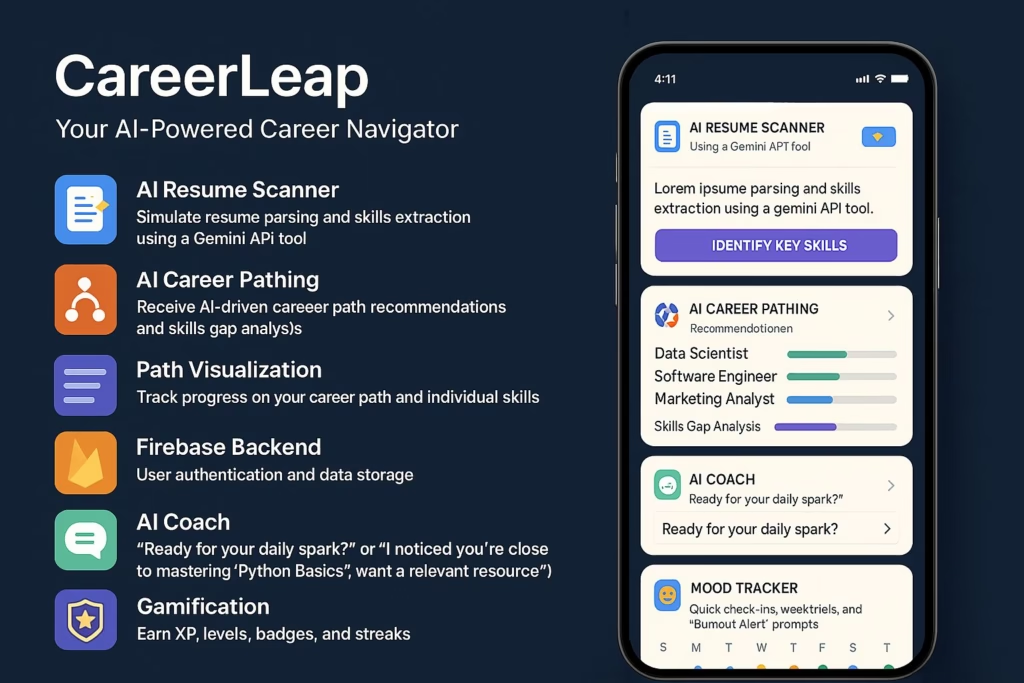The Power of a Referral: How to Network Your Way into a Google Interview

The Golden Ticket: Why Referrals Matter More Than Ever
Landing a job at Google. It’s a dream for many, a benchmark of success in the tech industry. Known for its rigorous hiring process, innovative culture, and impactful products, Google receives millions of applications each year. Navigating this competitive landscape can feel like searching for a needle in a haystack. While a stellar resume and strong technical skills are foundational, there’s a powerful, often underestimated, strategy that can dramatically increase your chances of getting noticed: the employee referral. In the vast ocean of applications, a referral acts as a beacon, guiding your profile towards the eyes that matter most. This article delves into the strategic art of leveraging your professional network to secure that coveted Google interview.
Securing a Google job referral isn’t just about knowing someone; it’s about cultivating relationships, demonstrating value, and strategically navigating the complex world of Google hiring. We’ll explore the ‘why’ behind the referral’s effectiveness, guide you through building a robust professional network, pinpointing the right connections, and gracefully asking for that crucial introduction. This is your roadmap to turning connections into opportunities and networking your way into a Google interview.

I. Why Google Referrals Are Your Secret Weapon
Google’s hiring process is famously thorough. Millions of resumes flood their system annually, and while they employ sophisticated Applicant Tracking Systems (ATS) to filter candidates, human intervention remains critical, especially at later stages. This is where the magic of a referral truly shines.
- Cutting Through the Noise: An internal referral often bypasses the initial automated screening. A Google employee who refers you is essentially vouching for your potential fit, flagging your application for review by a recruiter or hiring manager. This immediate visibility is invaluable.
- Implicit Vetting and Trust: Referrals aren’t just names passed along; they represent a level of implicit trust. The referring employee risks their own reputation by suggesting a candidate. This means they likely only refer individuals they genuinely believe possess the skills, drive, and cultural alignment—the “Googliness”—that the company seeks. This pre-vetting process carries significant weight.
- Cultural Fit Signal: Google places immense importance on cultural fit. A referral from a current employee provides a strong signal that you might align with Google’s collaborative, innovative, and data-driven environment. It suggests you might understand the company’s ethos and work effectively within its unique structure.
- Insight into Roles: Referrers can often provide nuanced insights into specific roles, team dynamics, and the required skill sets that might not be apparent from the job description alone. This allows you to tailor your application and interview preparation more effectively, showcasing your understanding and suitability.
- Higher Success Rates: While exact statistics vary and are proprietary, industry-wide data consistently shows that referred candidates often have a higher success rate in securing interviews and job offers compared to those applying through standard channels. For highly sought-after companies like Google, this advantage can be substantial. A successful job application often starts with a strong connection.
Leveraging referrals is not about shortcuts; it’s about strategic engagement. It’s about demonstrating that you are a proactive candidate who understands the importance of building relationships within the industry, particularly when aiming for competitive tech jobs.
II. Laying the Groundwork: Building Your Network Authentically
Before you can ask for a referral, you need a network. And networking isn’t just about collecting contacts; it’s about building genuine relationships based on mutual respect and value. Start early, be consistent, and focus on authenticity.
A. Identify Your Target at Google
Understand which departments, roles, or product areas genuinely interest you. Are you aiming for Software Engineering, Product Management, UX Design, Marketing, Sales, or something else? Knowing your target helps you identify relevant people and tailor your approach. Researching specific teams or projects within Google can give you conversation starters and demonstrate focused interest.
B. Leverage Your Existing Connections
Your strongest potential referrers often already exist within your circle:
- Friends & Family: Do any of them work at Google or know someone who does? Start here.
- Past Colleagues & Managers: People you’ve worked with previously are often invaluable connections. They know your work ethic and skills firsthand.
- University Alumni & Classmates: Tap into your university’s alumni network. Many alumni are happy to help fellow graduates navigate their careers, especially at prestigious companies like Google.
- Professors & Mentors: Academic mentors or professors who have industry connections might be able to offer introductions or advice.
- Project Collaborators: Anyone you’ve worked with on open-source projects, volunteer initiatives, hackathons, or even personal projects can be a potential contact.
C. Expand Your Network Strategically
If your existing network is limited, focus on expanding it intentionally:
- LinkedIn Mastery:
- Optimize Your Profile: Ensure your profile is complete, keyword-rich (using terms relevant to your target roles at Google), highlights your achievements with quantifiable results, and clearly states your career interests.
- Strategic Connections: Don’t just collect connections. Send personalized connection requests explaining why you want to connect (e.g., shared interest, admiration for their work, common connection).
- Engage Authentically: Like, comment on, and share posts from people in your target field or at Google. Add thoughtful insights. This makes your profile visible and establishes your expertise.
- Search Effectively: Use LinkedIn’s search filters to find current Google employees, especially those in roles or teams that interest you. Look for shared connections or alumni affiliations.
- Industry Events & Conferences (Virtual & In-Person):
- Attend webinars, tech talks, meetups, and conferences relevant to your field or Google’s areas of focus.
- Focus on quality interactions. Engage in meaningful conversations, ask insightful questions, and offer your own perspective.
- Collect contact information (email, LinkedIn profile) and send follow-up messages within 24-48 hours, referencing your conversation.
- University Alumni Networks:
- Most universities have online portals or databases for alumni. Utilize these to find fellow graduates working at Google.
- Attend alumni events, career fairs, or specific Google information sessions hosted by your alma mater.
- Online Communities & Forums:
- Participate in relevant online communities (e.g., specific subreddits, Discord servers, Slack channels, professional association forums).
- Contribute value by answering questions, sharing resources, and participating constructively before* considering any asks. Build a reputation first.
- Informational Interviews:
- This is perhaps the most powerful networking tool. Reach out to people (ideally through a warm intro or a highly personalized cold message) and ask for 15-20 minutes of their time to learn about their experience at Google, their role, and their career path.
- How to Request: Be specific about your interest and respectful of their time. Example: “Hi [Name], I’m exploring career paths in [Field] and greatly admire your work at Google, particularly [mention something specific]. Would you be open to a brief 15-minute virtual coffee chat sometime in the next few weeks so I could learn more about your experience?”
- During the Interview: Focus on listening and learning. Ask questions like: “What does a typical day look like for you?”, “What are the biggest challenges and rewards of your role?”, “What advice would you give someone trying to break into this field at Google?”, “What skills were most crucial for your success?”.
- The Follow-Up: Always send a thank-you note immediately after, reiterating a key takeaway from your conversation.
Remember, the goal of networking is to build relationships, not just to collect contacts. People are more likely to help those they know, like, and trust.
III. Identifying the Right Google Connection for a Referral
Not everyone at Google is positioned or willing to provide a referral. Strategic selection is key.
A. Who Makes a Good Referrer?
- Peer-Level Employees: Colleagues who are in similar roles or work on similar teams can be excellent referrers. They understand the day-to-day realities and technical requirements.
- People in Your Target Department/Product Area: Someone working directly in the area you wish to join will have the most relevant insight and potentially influence.
- Individuals with Shared Backgrounds: Connecting with Googlers from your university, previous company, or who share similar hobbies or interests can create an easier starting point for conversation and build rapport faster.
- Employees Who Have Recently Referred Someone: Sometimes you can find this information on LinkedIn (though tread carefully). It might indicate someone who is actively engaged with the referral program.
- Avoid Relying Solely on Recruiters/HR for Referrals: While they manage the process, their primary role isn’t necessarily to refer candidates unless they know them personally. Focus on connecting with potential future teammates or managers.
B. Researching Potential Referrers
Before reaching out, do your homework:
- LinkedIn Profile Deep Dive: Look at their career path, tenure at Google, specific projects they’ve worked on (if public), skills, and shared connections. Does their experience align with your aspirations?
- Content Contributions: Have they written blog posts, given conference talks, or contributed to open-source projects related to your field? This shows expertise and provides conversation topics.
- Mutual Connections: Identifying shared contacts is crucial. A mutual connection can provide a “warm” introduction, significantly increasing your chances of getting a positive response.
C. The Approach: Warm vs. Cold
Always prioritize warmth:
- Warm Outreach: If you have a mutual connection, ask that connection for an introduction. “Hi [Mutual Connection], I see you’re connected to [Google Employee Name]. I’m very interested in a role at Google and would appreciate an introduction if you feel comfortable.”
- Cold Outreach: If no mutual connection exists, your message needs to be exceptionally well-crafted, personalized, and concise. Clearly state why you’re reaching out to *them* specifically, reference something specific about their work or profile, and make a clear, low-commitment request (like an informational interview). This is where demonstrating your research pays off.
Building rapport takes time. Don’t expect an immediate referral upon first contact. Focus on establishing a connection first.
IV. The Art of Asking for the Referral
This is often the most nerve-wracking part, but with the right preparation, it can be straightforward and effective. Remember, you’re asking someone to invest their social capital.
A. Timing is Everything
Don’t lead with the referral request. Build some rapport first. Engage in a couple of meaningful interactions (e.g., informational interview, discussing a shared interest) before broaching the subject of a referral. Gauge their responsiveness and willingness to engage.
B. Be Prepared and Specific
Make it as easy as possible for them to refer you:
- Know the Exact Role(s): Have the specific job title and Job ID(s) ready. Google often hires for very specific roles. Generic referrals are less effective.
- Tailor Your Resume: Ensure your resume is updated and tailored to the specific Google role(s) you’re targeting. Highlight the skills and experiences mentioned in the job description.
- Prepare a Concise Summary: Draft a brief (2-3 sentence) summary of why you’re a strong candidate for the specific role, emphasizing key qualifications and achievements that align with Google’s requirements and culture. Think of it as your personal elevator pitch.
- Highlight Alignment: Briefly mention why you’re specifically interested in *this* role at Google and how your skills/experience make you a good fit. Connect it back to things you may have discussed previously or things you admire about Google’s work.
C. Crafting the Referral Request
Once you’ve established some rapport, here’s how to ask:
- Be Polite and Direct: “Hi [Name], thanks again for chatting with me last week. I really valued your insights on [topic]. Following our conversation, I’ve applied for the [Job Title] role (Job ID: [XXXXXX]) on your team/in your department. Given our shared background in [X] and my experience with [Y], I was hoping you might feel comfortable referring me for the position. I’ve attached my tailored resume and a brief summary of my qualifications for your convenience.”
- Offer an Option: Frame it so they can easily decline if they aren’t comfortable. “If you feel I’m a good fit and are comfortable doing so, I would be incredibly grateful for your referral. No pressure at all if not, but I wanted to ask.”
- Provide Context Easily: Ensure the resume and summary are attached or linked directly in the message. Make it effortless for them to forward your information.
Crucial Note: Never lie or misrepresent your relationship. If you only had one brief interaction, acknowledge that. Authenticity builds trust.
D. Handling a “No” or No Response
It happens. People are busy, might not know you well enough, or perhaps your profile isn’t quite aligned with what they can confidently refer. If you don’t get a response or they decline:
- Don’t Take It Personally: There could be many reasons beyond your control.
- Send a Polite Follow-Up (Once): After a week or so, a gentle follow-up is acceptable. “Hi [Name], just wanted to gently follow up on my previous email regarding the [Job Title] role. I understand if you’re unable to assist at this time. Either way, I appreciate your consideration.”
- Thank Them Regardless: If they decline or don’t respond, still thank them for their time if you interact later. Don’t burn bridges; maintain professionalism.
- Move On: Focus your energy on nurturing other connections and pursuing other avenues. Continue applying directly as well.
V. Post-Referral Etiquette: Nurturing the Connection
Getting the referral is just one step. Maintaining the relationship is crucial for future opportunities and demonstrating professionalism.
- Immediate Thank You: Send a prompt thank-you email or LinkedIn message to your referrer immediately after they submit the referral.
- Provide Updates: Keep your referrer informed about your application’s progress. Let them know if you get an interview, progress to the next round, or if you unfortunately don’t move forward. This shows respect for their help.
- Share Outcomes: Whether you get the job or not, share the final outcome. If you get an offer, thank them again sincerely. If you face rejection, thank them for the opportunity and perhaps ask for brief feedback if appropriate (and if they seem willing).
- Reciprocate: As your own network grows, offer help and referrals to others when appropriate.
VI. Alternative Referral Strategies & Considerations
While direct referrals are powerful, consider these related strategies:
- Internships & Early Career Programs: Referrals are especially impactful for students and recent graduates applying for internships or entry-level roles. University career services and alumni networks are prime resources.
- Internal Mobility: If you already work at Google, internal referrals and mobility programs are key pathways.
- Open Source Contributions: Contributing meaningfully to open-source projects that Google uses or supports can get you noticed by Googlers involved in those projects, potentially leading to a referral.
- Don’t Neglect Direct Applications: While referrals are great, they aren’t the *only* way. Continue applying directly to roles that excite you, ensuring your application is strong and tailored. Sometimes a strong direct application can lead to a recruiter reaching out proactively.
VII. Common Mistakes to Avoid
Steer clear of these pitfalls:
- Asking Strangers Coldly: Sending a generic “Refer me to Google” message to someone you don’t know, without prior interaction, is rarely effective.
- Being Entitled or Demanding: Remember, referrals are favors. Approach with gratitude and respect.
- Sending a Generic Resume: Your resume MUST be tailored to the specific Google role. A one-size-fits-all approach won’t impress anyone, referrer or recruiter.
- Not Following Up Appropriately: Ghosting your referrer after they help you is unprofessional.
- Expecting Guaranteed Interviews: A referral significantly improves your visibility, but it doesn’t guarantee an interview. Your qualifications still need to align.
- Focusing Solely on Referrals: Continue applying directly and building your skills independently. Don’t put all your eggs in the referral basket.
- Asking Too Soon or Too Often: Building relationships and asking for referrals requires patience and tact.
Conclusion: Networking for Your Google Dream
Securing a Google interview is a challenging but achievable goal. While talent and hard work are essential, strategically leveraging your professional network through employee referrals can provide a critical advantage. By focusing on building authentic relationships, identifying the right connections, preparing meticulously, and asking respectfully, you can significantly enhance your prospects.
Remember that the process of networking is ongoing. It’s about continuous learning, contribution, and connection. Treat every interaction as an opportunity to build rapport and provide value. Persistence, authenticity, and a genuine interest in others are your greatest assets in navigating the path toward your Google career aspirations. Start building your network today, and turn those connections into your next big opportunity.
- Stop Preparing for the Google Interview of 2020. Here’s What Changed.
- We Asked 100 Google Engineers How They Use Gemini: Here’s What We Learned
- Why Your Next Promotion Might Depend on Your AI Literacy (Not Your Code)
- From Marketing to Machine Learning: How One Googler Reinvented Their Career
- A Tuesday at Google: Why Our Offices Are Buzzing Again
Frequently Asked Questions (FAQ)
How important is a referral for a Google job application?
A referral is highly important as it significantly increases the visibility of your application, often bypassing initial automated screenings. It signals a level of trust and potential cultural fit, giving you a competitive edge in the hiring process.
Can I ask someone I barely know for a Google referral?
It’s generally not recommended. Building some rapport through interactions like informational interviews or engaging in professional discussions first is crucial. People are more likely to refer candidates they know, trust, or whose qualifications they can genuinely vouch for.
What information should I provide when asking for a referral?
Always provide the specific Job ID and title you’re targeting. Include a tailored resume and a concise summary highlighting why you’re a strong fit for that particular role at Google. Make it easy for the referrer to pass along your information effectively.
How do I find Google employees to network with?
Utilize LinkedIn effectively by searching for Google employees in roles or departments that interest you. Engage with their content, leverage alumni networks from your university, attend industry events (virtual or in-person), and participate in relevant online communities.
What if my referral doesn’t lead to an interview?
A referral significantly boosts your chances but doesn’t guarantee an interview. Continue applying directly, refining your resume, and networking with others. Thank your referrer regardless of the outcome and keep them updated.
Is it okay to ask for advice before asking for a referral?
Absolutely. Asking for an informational interview or advice about their career path or role at Google is a great way to build rapport before mentioning a referral. It shows genuine interest and respect for their experience.





One Response
[…] and the status of their referrals. Regular updates prevent frustration and maintain engagement. Google employs targeted questioning to help employees leverage referrals and networking to land interviews, which can enhance the […]